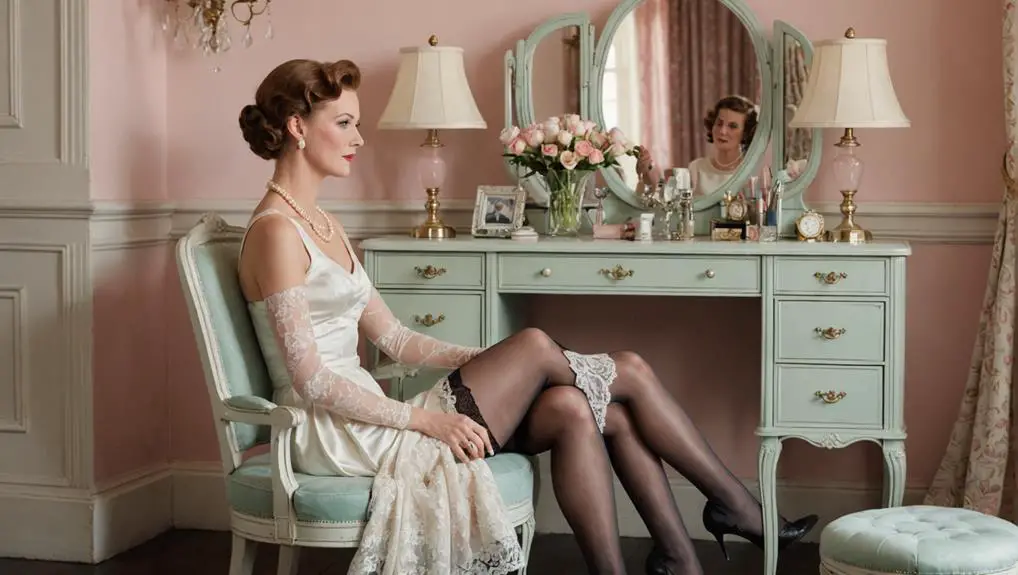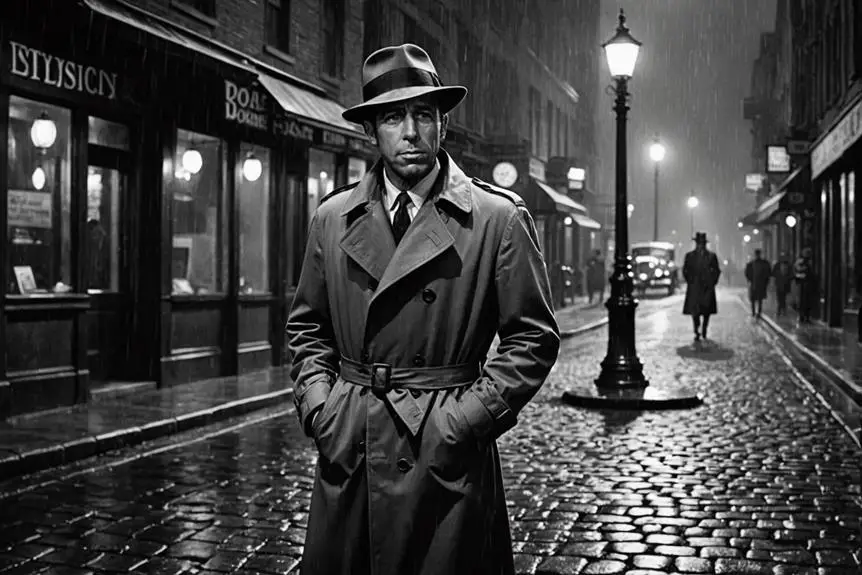If you think the Little Black Dress is just a simple garment, you're dramatically underestimating its influence on fashion and society. Introduced by Coco Chanel in 1926, this iconic piece transformed not just wardrobes but the very perceptions of women's style. As you explore its origins, evolution, and cultural significance, you'll uncover how the LBD has become a symbol of empowerment and elegance throughout the decades. What might surprise you is how this one dress encapsulates the changing tides of women's rights and fashion trends over time.
Origins of the Little Black Dress
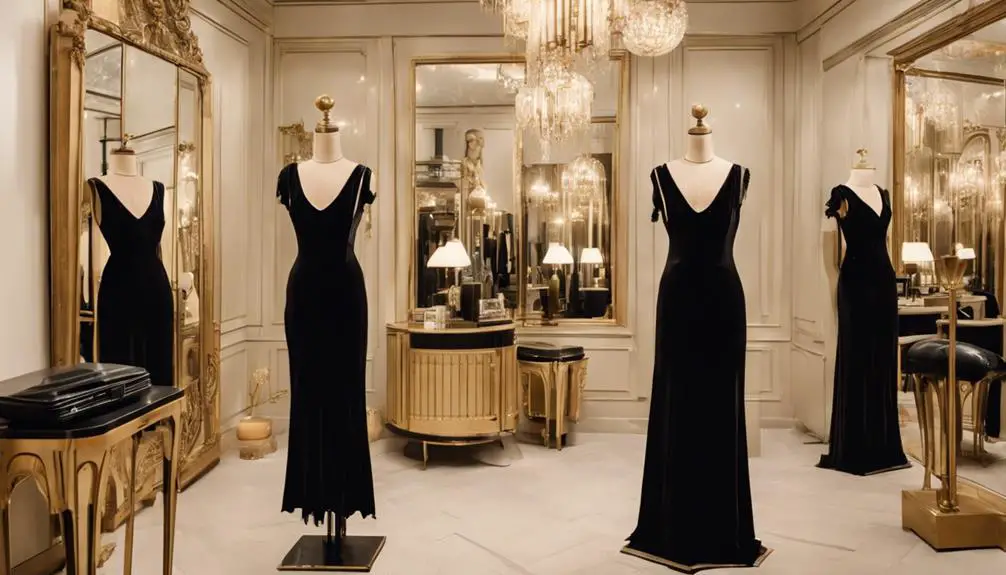
When Coco Chanel introduced the Little Black Dress (LBD) in 1926, it revolutionized women's fashion by transforming black from a color associated with mourning to one of elegance and versatility. Imagine a time when black was reserved for sad occasions! Chanel changed that by creating an elegant black dress that anyone could wear. It was featured in American Vogue and quickly became known as an accessible garment for women of all classes.
Dubbed "Chanel's Ford," it was like the Model T of fashion—affordable and stylish. This democratized fashion, allowing you to embrace modern femininity without breaking the bank. And let's be real, who doesn't love a versatile garment that can shift from day to night?
The LBD emerged during the Great Depression, a time when practicality was key. Chanel's design offered a chic alternative to the restrictive dress codes of the past. You could wear it to a fancy dinner or a night out with friends, and still feel fabulous.
Think about it: a simple black evening dress could be dressed up or down, making it the ultimate go-to in your wardrobe. It's no wonder that this iconic piece remains a staple today! So, next time you slip into a little black dress, remember, you're not just wearing a piece of clothing—you're rocking a symbol of freedom and style that Coco Chanel fought to make accessible for everyone. Isn't that empowering?
Evolution Through the Decades
Over the decades, the Little Black Dress (LBD) has evolved dramatically, adapting to the social and cultural shifts of each era. In the 1930s, during the Great Depression, the LBD became a symbol of affordable chic, allowing women from all walks of life to look stylish without breaking the bank. Scarves, much like the LBD, were also embraced for their versatility and elegance showcasing individual style. Can you imagine a time when elegance was within reach for everyone?
Then came the 1940s, when World War II influenced fashion. Fabric rationing led to simpler, more practical designs, but the LBD retained its versatility. Women needed outfits that worked for both day and night, and the LBD was up for the challenge!
Fast forward to the 1950s—the post-war era brought Christian Dior's New Look! This redefined the LBD, introducing hourglass silhouettes that celebrated femininity and glamour. It was all about feeling fabulous!
In the 1960s, the fashion scene shifted again. Mini dresses and classic sheath styles emerged, with Audrey Hepburn rocking her iconic Givenchy LBD in "Breakfast at Tiffany's." Who didn't want to be as chic as her?
The 1980s brought a whole new vibe. The LBD was revitalized with casual fabrics and fitness influences. Celebrities like Joan Collins and Madonna showcased its adaptability, proving that the LBD could keep up with contemporary trends.
Cultural Significance and Impact
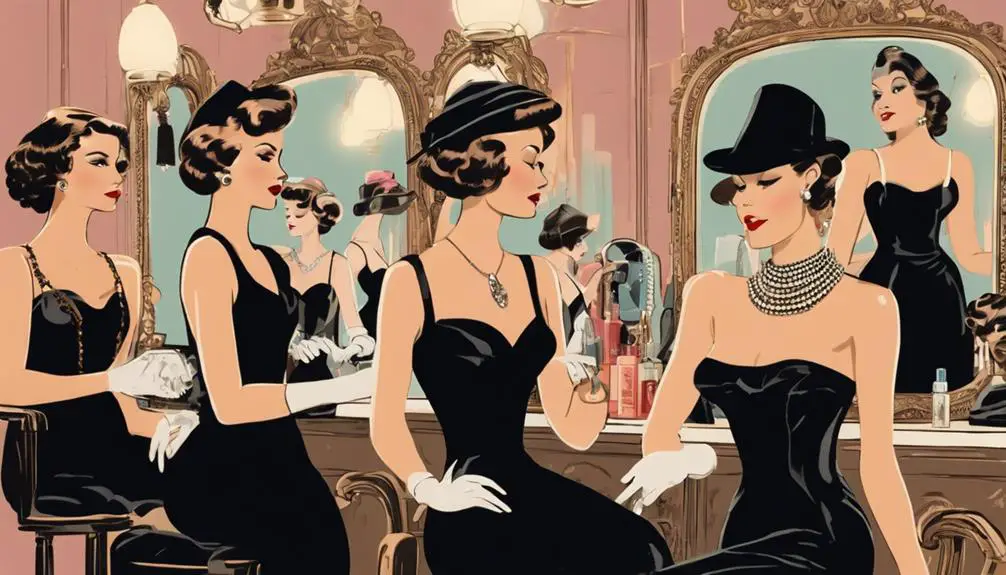
The Little Black Dress's cultural significance extends far beyond its fabric and design; it embodies women's empowerment and independence. Introduced by Coco Chanel in 1926, this fashion essential marked a shift in societal norms, making waves in the world of gender equality. Isn't it amazing how something as simple as a dress can symbolize so much? Just as vintage fashion, like vintage Ralph Lauren, holds stories of its own, the LBD carries a rich history that reflects changing attitudes towards femininity and style.
Think about Audrey Hepburn in "Breakfast at Tiffany's." That iconic Givenchy dress wasn't just stylish—it was a statement. The little black dress became a symbol of elegance and sophistication, showing that women could be both fashionable and powerful. Its versatility is unmatched; you can dress it up for a fancy dinner or keep it casual for a day out with friends. Talk about a timeless wardrobe staple!
Over the years, the LBD has played a huge role in defining women's fashion. It's been linked to significant social movements, reinforcing its status as a must-have. No matter the decade, this dress continues to resonate with women from all walks of life.
In contemporary fashion, the little black dress remains ever-popular, strutting down runways and getting the celebrity seal of approval. It's like a best friend that never goes out of style. So next time you slip into your LBD, remember, you're not just wearing a dress—you're embracing a legacy of empowerment, versatility, and timeless chic. How cool is that?
Iconic Examples in Fashion
Celebrating iconic examples of the little black dress (LBD) reveals how this timeless piece has shaped fashion history. Think about Audrey Hepburn's stunning black Givenchy dress from "Breakfast at Tiffany's." That outfit wasn't just a dress; it became an icon, selling for a jaw-dropping £410,000 in 2006! Can you imagine wearing something so famous?
Then there's Marilyn Monroe, who rocked the LBD in "Gentlemen Prefer Blondes." Her sultry style made the dress a symbol of glamour in the 1950s. Fast forward to 1994, when Princess Diana wore her famous "revenge dress." This sleek black silhouette made headlines, showcasing her independence after her separation from Prince Charles. Talk about style!
Édith Piaf, the legendary French singer, often performed in a simple black sheath dress. It was her signature look, drawing attention to her powerful voice. And let's not forget Victoria Beckham, who brought the LBD back in the late 1990s as Posh Spice. She showed us the versatility of this classic piece, making it relevant for a whole new generation.
From Chanel to today's fashion runways, the little black dress remains a staple. It's not just about looking good; it's about feeling empowered! So, whether you're dressing up for a special event or keeping it casual, the LBD is always a great choice. What's your favorite LBD moment?
Modern Interpretations and Trends
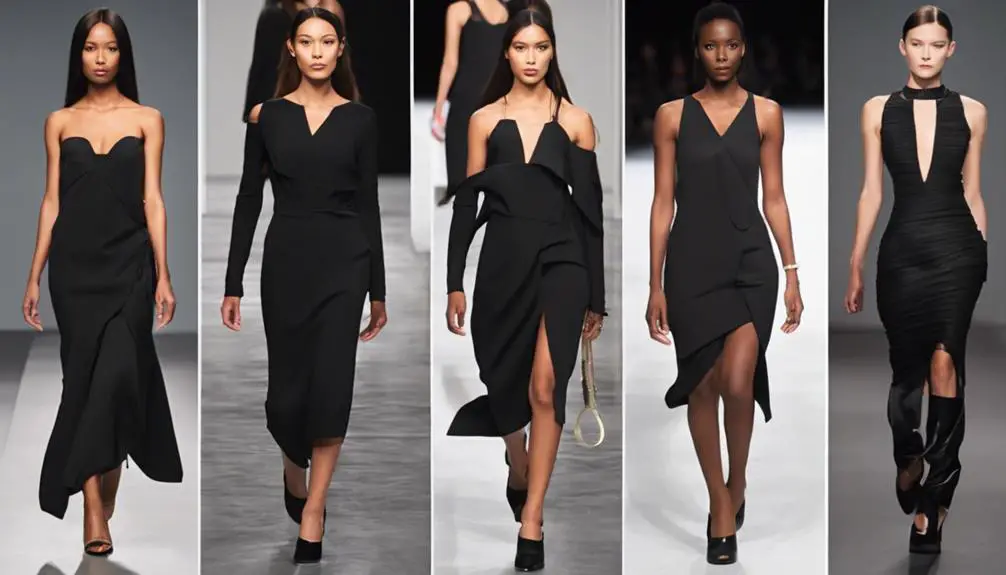
Modern interpretations of the little black dress (LBD) showcase its evolution in a world where fashion continually adapts to new influences. Today, modern designers are pushing the envelope by using innovative materials and sustainable fabrics. This means your LBD can be stylish and eco-friendly—how cool is that? Social media has also changed the game. You'll see diverse styling options across various platforms, making the LBD accessible for all body types. No more one-size-fits-all!
Custom designs are really taking off, too. You can now create a unique LBD that reflects your personal style! Want a pop of color or a funky pattern? Go for it! Celebrity endorsements from stars like Rihanna and Meghan Markle keep the LBD in the spotlight. When they rock a modern take on this classic piece, it gets everyone talking and shopping.
Fashion shows regularly highlight contemporary variations of the LBD, which proves its adaptability. Whether it's a sleek, minimalist design or a bold, dramatic piece, there's an LBD for every occasion. Feeling a bit adventurous? Try pairing it with chunky boots for an edgy vibe or classic heels for a timeless look.
With all these trends, the little black dress remains a staple in your wardrobe. So, what are you waiting for? Immerse yourself in the world of modern LBD styling and find the perfect dress that makes you feel fabulous!
Frequently Asked Questions
What Does the Little Black Dress Symbolize?
The little black dress symbolizes timeless elegance and versatility, serving as a fashion icon and evening wear staple. Its cultural significance reflects personal expression, social status, and a feminist statement, influenced by modern interpretations and color psychology.
What Is the History Behind the Little Black Dress?
You might think fashion's just about trends, but the little black dress embodies fashion evolution. From iconic designers to celebrity influence, its timeless appeal showcases various styles, fabric choices, and accessorizing tips across global interpretations and seasonal trends.
What Is the Origin of the Black Dress?
The black dress originated as Victorian mourning attire, but Coco Chanel's design sparked a fashion revolution. It became a symbol of cultural significance, embodying social change, minimalist style, and timeless elegance in evening wear and Hollywood glam.
Why Do You Think the Little Black Dress Became so Important in the 1920S?
In the 1920s, 85% of women worked outside the home, fueling the flapper fashion trend. Coco Chanel's timeless elegance embodied social liberation, marking a style revolution that empowered women and reshaped cultural norms during the jazz age.

